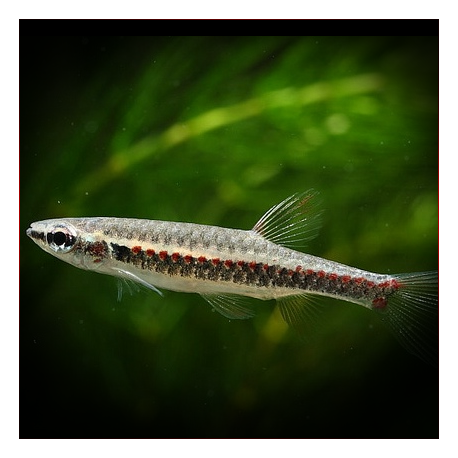More info
Datasheet
| Minimum Tank Size | 60 litres / 15.85 US gallons |
| Maximum Size | 4.5cm / 1.77inches |
| Temperature | 20°C / 68.00°F - 28°C / 82.40°F |
| Hardness | 1.01dgH / 18ppm - 5.04dgH / 90ppm |
| pH | 4.0-7.0 |
Behaviour
The Copella Nattereri is known to be peaceful but somewhat unsuitable for the general community aquarium setup. It is best maintained alongside similarly-sized characids, gasteropelecids, lebiasinids, smaller callichthyid or loricariid catfishes, and diminutive, non-predatory cichlids. A mixed-sex group of at least 8-10 specimens is recommended, along with the inclusion of other schooling fishes to provide security and create a more natural-looking spectacle. Males in the group will display their best colors and exhibit fascinating behavior as they compete with one another for female attention.
Feeding and Diet
The Copella Nattereri is considered a micropredator feeding on tiny invertebrates and zooplankton in its natural habitat. In an aquarium environment, they accept dried foods but should be offered daily meals of small live and frozen fare such as Artemia nauplii, Moina, grindal worm, and small insects like crickets or fruit flies. Supplementing their diet with fish flakes or vegetable matter before offering live foods is recommended.
Reproduction & Dimorphism
During reproduction, the Copella Nattereri deposits its eggs among vegetation, which are guarded by the male during incubation. Initially, small numbers of fry may appear without intervention, but for controlled breeding, a separate tank setup with suitable plants or floating alternatives is ideal. Males create small territories around spawning sites to attract females. After incubation, the male guards the brood until the eggs hatch, at which point the fry should be provided with small grade foods like Paramecium or Artemia nauplii. Males grow larger, develop more extended fins, and exhibit brighter colors compared to females.
Habitat and Distribution
The Copella Nattereri is commonly found in forest streams and minor tributaries, particularly in the middle and upper Amazon river drainage in Peru and Brazil. Its preferred habitats are characterized by overhanging riparian vegetation, and the water typically has a tea-stained color due to decomposing organic matter released into the water.
Aquarium Setup
To recreate its natural habitat, the Copella Nattereri thrives best in a densely planted aquarium or paludarium with overhanging vegetation and floating plants. The addition of roots, branches, and dried leaf litter enhances the natural feel and provides cover for the fish. Maintaining dim lighting conditions and well-oxygenated water with a bit of surface agitation is advisable. Avoid adding this species to a biologically immature aquarium due to its susceptibility to water chemistry fluctuations.

